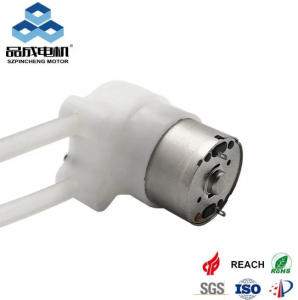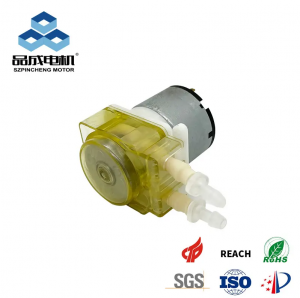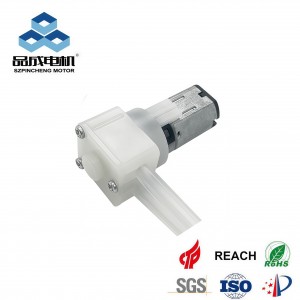What Is the Flow Rate of a Mini DC Peristaltic Pump? | A Detailed Guide
The Mini peristaltic pump is a cornerstone of precision fluid handling, found everywhere from laboratories to aquariums. A fundamental question for anyone integrating one into a project is: What is its flow rate?
The short answer is that the flow rate for a typical Mini peristaltic pump can range from as low as 1 milliliter per minute (mL/min) to over 500 mL/min. However, pinning down a single number is misleading. The actual output of a 12v peristaltic pump is not a fixed specification but a variable that depends on a key set of factors.
This article will demystify the flow rate of these versatile pumps, helping you predict and control the performance of your water peristaltic pump application.
The Direct Drivers of Flow Rate
Unlike many other pumps, a peristaltic pump's flow rate is primarily determined by two easily controllable mechanical factors:
1、Pump Head RPM (Revolutions Per Minute): This is the most significant factor. The flow rate has a linear relationship with the pump's speed. Double the RPM, and you essentially double the flow rate. This is why these pumps are often paired with speed-controllable DC motors or stepper motors.
2、Inner Diameter of the Tubing: The tubing is the pump's "displacement chamber." A larger inner diameter creates a larger fluid pocket per roller revolution, resulting in a higher flow rate. The difference between using 1mm ID tubing and 3mm ID tubing on the same pump can be a 900% increase in flow.
Typical Flow Rate Ranges by Application
While specific models vary, here are general flow rate expectations for common types of Mini peristaltic pumps:
1、Low-Flow/Laboratory Pumps: These precision units often have very small tubing and are designed for delicate work. Their flow rates are typically in the range of 1 mL/min to 50 mL/min. They are ideal for chemical dosing or precise reagent addition.
2、Standard 12V DC Pumps: The most common 12v peristaltic pump used in DIY projects, aquariums, and horticulture often delivers flow rates between 20 mL/min and 300 mL/min at 12V. This makes them perfect for tasks like aquarium dosing (1-10 mL/min) or nutrient dispensing in hydroponics (50-100 mL/min).
3、High-Flow Fluid Transfer Pumps: Some larger Mini peristaltic pump models with wider tubing are designed for faster fluid transfer. These can achieve flow rates from 200 mL/min up to 1000 mL/min (1 L/min), suitable for emptying containers or circulating liquids.
Key Factors That Influence and Reduce Flow Rate
Several conditions can cause your pump's actual flow rate to be lower than its theoretical maximum:
1、Tubing Material and Wear: Soft tubing like silicone has excellent rebound but can be easily compressed, reducing flow. Stiffer tubing like Norprene or Tygon maintains its shape better. Over time, all tubing fatigues and loses elasticity, leading to a gradual decrease in flow rate.
2、Fluid Viscosity: A water peristaltic pump will have its highest flow rate. Thicker fluids like oils or syrups create more resistance, slowing down the flow. The pump will still meter them consistently, but the volume per minute will be lower.
3、Back-Pressure: Any resistance at the output—such as lifting fluid to a height, pushing through a narrow nozzle, or overcoming system pressure—will work against the pump and reduce the flow rate.
4、Voltage and Motor Load: Operating a 12v peristaltic pump at less than 12V will slow it down, directly reducing flow. Similarly, if the motor is under-powered for the load (e.g., from high viscosity or back-pressure), it may stall or run slower.
How to Calculate and Calibrate Your Pump's Flow Rate
For critical applications, you should never rely solely on manufacturer specifications. Calibration is simple and highly recommended:
1、Set Up Your System: Use the exact tubing, fluid, and voltage you plan to use in your final application.
2、Run the Pump: Activate your Mini peristaltic pump for a measured amount of time (e.g., 1 minute or 5 minutes). Using a longer time period increases accuracy.
3、Measure the Output: Collect the fluid in a graduated cylinder and measure the volume in milliliters (mL).
4、Calculate Flow Rate: Use the formula:
Flow Rate (mL/min) = Total Volume Collected (mL) / Time (min)
This measured value is the true flow rate for your specific setup and should be used for all further calculations.
Conclusion: A Variable for You to Control
In conclusion, the flow rate of a Mini peristaltic pump is not a single number but a flexible characteristic. While a standard 12v peristaltic pump might commonly operate between 20-300 mL/min, you have direct control over the final output through your choice of tubing, motor speed, and operating voltage.
you like also all
Post time: Sep-30-2025




